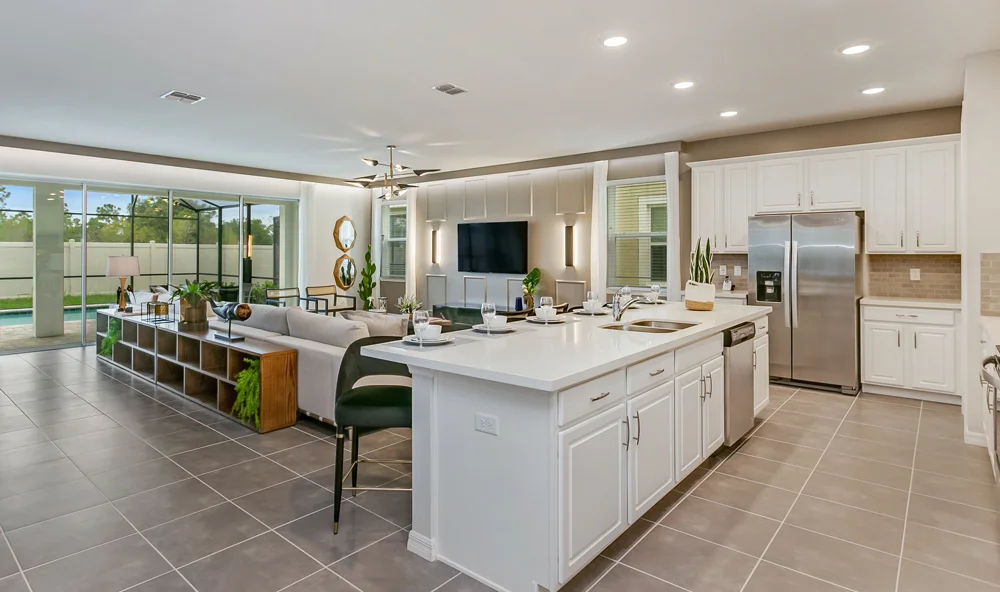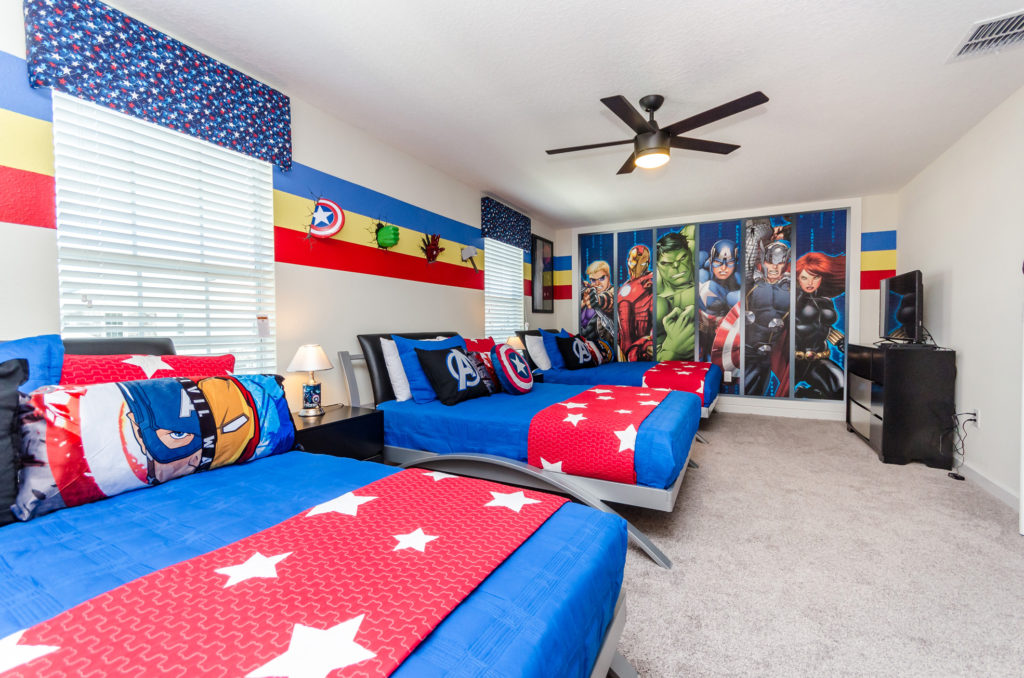Price Your Vacation Home for Success
Finding the right rate for your vacation home listing is key for success. The right rate can set you apart from your competition and drive demand for your listing. The right balance can also help you to charge higher rates when demand is high, or to lower your rates when bookings are slow.
Simply setting high and low season rates is basic – that’s what your competition is doing. You need to stand out! To optimize your income, you can fine tune your rates using the following tips.
Analyze the Competition
First, search for similar vacation rentals in your area to get a feel for an average rate. Keeping your rate within this ballpark will give you the best chances with bookings. Pricing your rental too high, let’s say $500 a night, while similar homes in the area are going for $350 will make your listing less attractive.
To analyze your competition effectively, start by writing down the specifications of your listing: number of bedrooms and bathrooms, number of people it can accommodate, parking spaces and other amenities. Search for other listings in your area with the same specs and write them down. Using popular listing sites like Airbnb or HomeAway will give you the same perspective as a potential guest.
When you have a good number of listings to compare, you can start to narrow down the competition. Check the calendar for each listing to see their booking performance. If a listing’s calendar is open, especially on weekends and holidays, it’s probably not one you want to compare yourself to.
Evaluating your home objectively is important. Depending on the size, location and noteworthy features of your listing, you may be able to increase your rates from the area average. Which is why knowing and highlighting your strengths is essential.
Know and Highlight Your Strengths
Once you have listings that have the same specs as yours, it’s time to find the features that make your home stand out!
Upgraded kitchens and bathrooms are desirable. Nicely furnished living areas and bedrooms stand out. Entertainment options like HD televisions with Netflix are becoming a trend. If you have a pool or a ping-pong table– highlight it! Guests on vacation will favor features which help them to relax and have fun.
This doesn’t mean you must have all these highlights, but you shouldn’t compare your listing to those that do.
For example, look at these two living spaces from the same resort:
[[[[ insert two images from the same resort next to each other ]]]
Would you pay the same rate for both these units?
This same concept can be applied in all rooms of your vacation rental. Even furnishings can be a strength however, it is important to stay unbiased. You may find your quirky, thrift store sofa to be a gem, but a guest may find it unattractive. Remember, guest also pay for the experience!
After trimming down the list of competition, choose a handful to compare and do the math.
Do the Math
Using the listings you gathered, write down all their rates into a table format. Search for specific dates to get quotes with the most accurate rates. When searching for specific dates, try to group rates into categories by season or event – for example: high season, low season, winter holidays, etc. If some listings maintain the same rate all year round, just repeat the rate across all your categories. Later we will use this data to do the math.
[[ insert image here of a sample comparison table ]]
Most areas experience rate surges depending on local events or area attractions. Knowing your area is a huge advantage to stay competitive with your rates. A great example of this is Orlando, FL. With Disney being a huge attraction in the area, any time of the year children are out of school will create a surge of demand in Orlando. Keeping a calendar of local events such as conventions and festivals will give you the insider knowledge of a local, even if you live in a separate state!
Using the table created earlier, find the average rate for each of your categories. To find the average, add the rates from each listing and divide by the number of listings in that column (in our example, this is 5).
[[ a good place to add another illustration/image ]]
This average is a baseline rate to be competitive in your area, but is only a suggestion. Other factors like historical data or reputation can determine the right rate for your listing.
Find the Sweet Spot
Now that you’ve analyzed the competition and found the average rate for your area, it’s time to find the sweet spot. Out pricing your competitors may seem like a smart move but when demand is slow, the higher priced bookings tend to stay open.
On the other hand, if demand is booming and all comparable listings are reserved – your chances of getting booked with higher rates are more likely.
Finding the right balance is the key for success. The goal is to get the best rates possible, while still getting plenty of bookings – this is where the sweet spot is.
The sweet spot where your rate is not too high when demand is low, and not too low when demand is high.
Oftentimes, setting lower rates can produce more income compared to higher rates. For example, your rate is at $300/night while your competitor’s is at $400/night. Just 3 bookings for 2 nights each will earn you $1,800. Your competitor may only get 1 booking for 2 nights, earning $800.
At first glance, the $400 rate looks better than $300 – but when you consider the fact that competitive prices usually get more bookings, it’s the lower rate that generates more revenue in the end.
Finding the sweet spot allows you to charge higher rates when appropriate and still have bookings, optimizing your rental income!
Use Your Data
A free and valuable tool, your rental history is a gold mine for rate setting guidance.
Comb through your rental history looking for trends and data points. Were some seasons busier than others? How many bookings did you have over the holidays? Can you identify areas where you may want to adjust your rate?
Trends from your historical data can emerge that are not commonly known. One example is that “summer season” is typically defined as late May through early September. Most home owners increase their rate anticipating demand. Your data however, may suggest that the “summer season” slows in August. Noticing this trend gives you an advantage in the month of September if you decide to decrease your rate and earn more bookings.
Don’t use the low season as an excuse for dips in your past booking performance. Instead, learn from it and adjust your rate to avoid repeating the same pattern next year.
Build Your Reputation
Reputable businesses earn more money, and vacation rentals are no different! A 5-star rating can justify a boost in your rate, as long as you stay near your competition’s range.
Social media and online reviews play a significant role in online booking tools. The better your reviews, the more acceptable higher rates are.
Staying near the sweet spot is still wise, but if your competitors have half the number of reviews or lower stars than your listing – it’s a safe bet to up your price by a small margin. Even with a higher rate, guests are willing to spend a little more if they are reassured by other travelers’ reviews.
Ask for Help
Keeping up with optimal rates is a full-time job for successful rental home owners, but is completely manageable with the right tools. When you out smart your competition, highlight your strengths, and find your sweet spot you’ll earn more income and be more successful in your bookings!
Casiola works with hundreds of owners across the Theme Park District to make sure their rates are exactly where they should be for their season and market. Visit our Service Page to learn how we help make every aspect of vacation rental ownership easier with dynamic pricing, powerful marketing, and much more.







